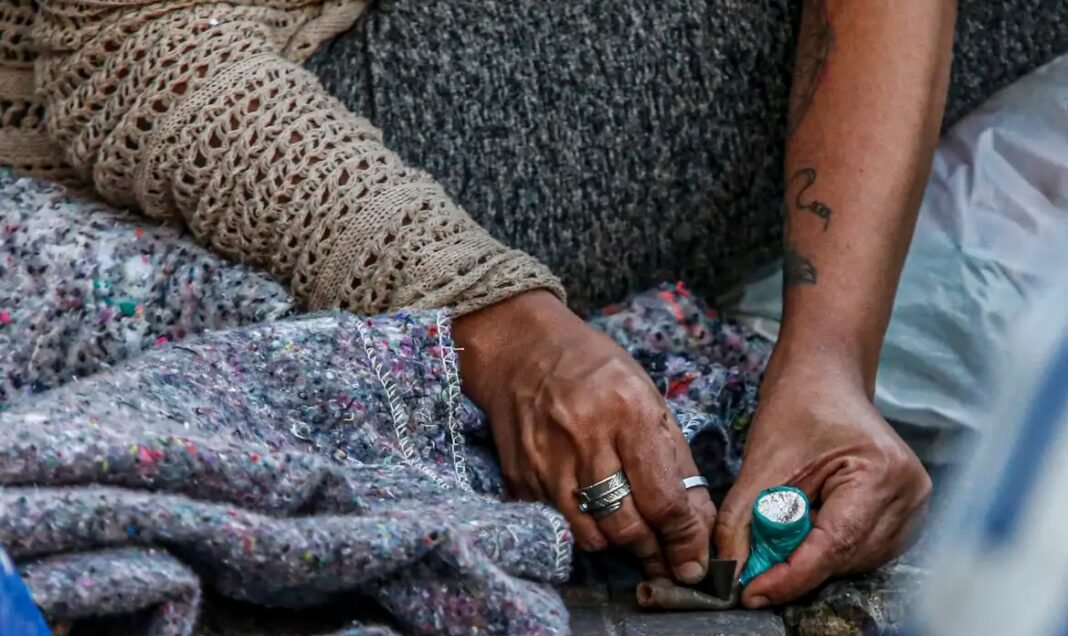Drug use and sales in the area known as “Cracolândia” in downtown São Paulo remain persistent, visible, and continue to spread into nearby neighborhoods. This scenario unfolds six months after dozens of drug users vanished from Rua dos Protestantes, in Santa Ifigênia, without clear information on where they went. During the day, it is common to see individuals moving through the streets with pipes in hand. At night, the flames used to heat crack cocaine still illuminate corners, showing ongoing resistance to eliminating crack dens on the outskirts, despite continuous operations by the Military Police and the Metropolitan Civil Guard aimed at preventing new concentrations of users.
This Content Is Only For Subscribers
To unlock this content, subscribe to INTERLIRA Reports.
End of the Flow
The government of Tarcísio de Freitas (Republicanos) claims that the “flow,” as the mass gathering of users is known, has ended. City Hall, led by Mayor Ricardo Nunes (MDB), adopts a more cautious narrative, referring to the situation as a gradual emptying. In an interview, Vice-Governor Felício Ramuth (PSD) stated that “Cracolândia is over and will not return,” despite the continued presence of users across the central region.
Latin America Memorial
On Monday night (10/11) and throughout Tuesday (11/11), around 30 people were gathered on the sidewalk alongside the wall of the Latin America Memorial, on Avenida Pacaembu, in Barra Funda, in the western zone. The site is located near a major transportation hub, which concentrates buses, trains, and metro lines. A small drug market operated openly in the area. Pipes used for crack consumption were displayed for sale on a box, along with drinks, small items, and toys—creating a familiar routine among those present.
End of the Gathering
The Memorial is roughly 3 km from Rua dos Protestantes, the last major hub of the concentrated “flow,” which reached around 400 people at certain times, according to municipal monitoring. The site gradually emptied earlier this year until a sudden mass departure occurred in May, when the group vanished amid the presence of Civil Guard agents and vehicles. Since then, users have dispersed across the region, seeking smaller drug dealers. Larger groups have briefly reappeared in Marechal Deodoro Square, on General Olímpio da Silveira Avenue, and on Helvétia Street—all subsequently broken up by Military Police and Civil Guard operations.
Other Locations
Months before, a group of similar size had occupied another area of Pacaembu Avenue, near the elevated Presidente João Goulart highway (Minhocão). After complaints from residents, the Military Police and Civil Guard initiated enforcement actions with support from municipal cleaning teams, leading to the group’s departure. Besides, the Latin America Memorial, three other locations now host more than ten people consuming crack together without regular police or social assistance presence: on Professor Laerte Ramos de Carvalho Street near João Passalaqua Street, in Bela Vista; at the beginning of the Minhocão near Amara Gurgel Street; and on Barão de Piracicaba Avenue. Users in smaller groups have also been observed consuming crack on Rua dos Gusmões, Alameda Barão de Limeira, Rua Vitória, Avenida Rio Branco, and in the vicinity of Funarte, between Alameda Nothmann, Rua Apa, and Rua General Júlio Marcondes Salgado.
Analysis:
The persistence and dispersion of drug use in São Paulo’s central region reveal the limits of current public security and social assistance strategies in addressing the Cracolândia phenomenon. Despite the state government’s assertion that the “flow” has ended, the continued presence of drug users in smaller, decentralized groups suggests a spatial reconfiguration rather than a resolution of the problem. The forced dispersal of users, often resulting from police operations, has fragmented the visible concentration without tackling the underlying issues of addiction, mental health, and homelessness that sustain the cycle. As a result, the problem has merely shifted to adjacent neighborhoods, spreading the associated social and security challenges over a wider area.
Sources: A Folha de SP; O Globo.




